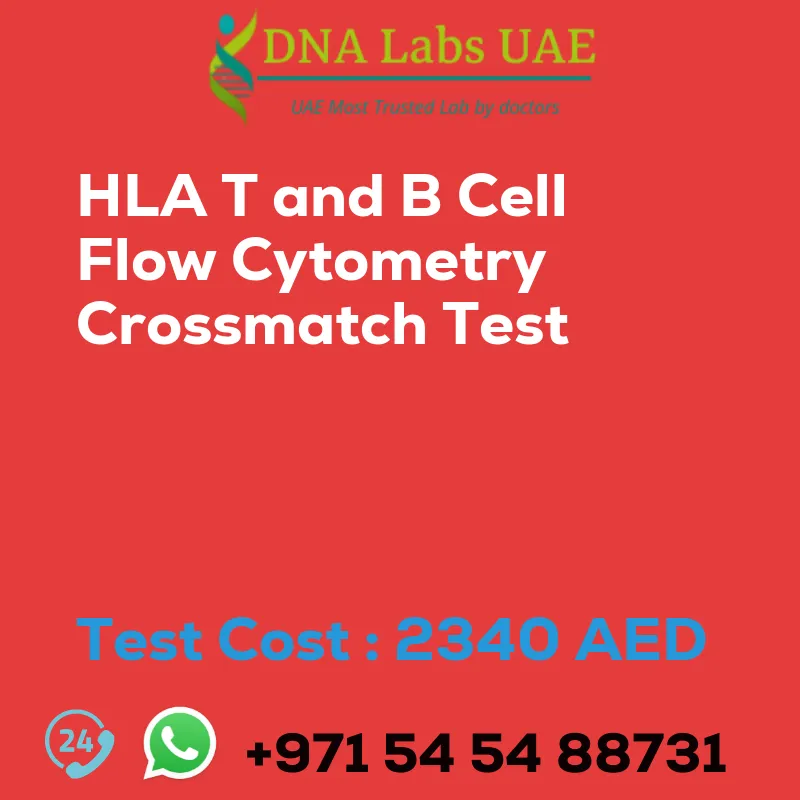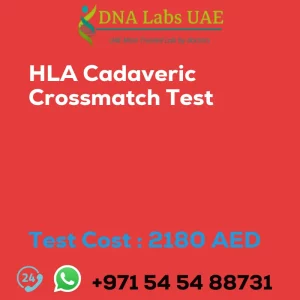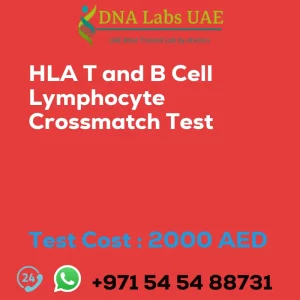HLA T and B CELL FLOW CYTOMETRY CROSSMATCH Test
Test Cost: AED 2340.0
Components:
- Recipient: 2 mL (1 mL min.) serum from 1 SST and 4 mL (2 mL min.) whole blood from 1 Green Top (Sodium Heparin) tube.
- Donor: 3 mL (2 mL min.) whole blood in 3 Green Top (Sodium Heparin) tubes.
Sample Condition: Ship immediately at 18-22°C. Do not freeze. Brief history in Solid Organ Transplant Consent form (Form 33) is mandatory. Doctor’s prescription on the letterhead with stamp and 1 photograph each of recipient and donor is mandatory. Above specimen requirements are for a single donor being cross-matched with a single recipient. For additional cross matches, send additional specimens of donors. Request as additional tests. Collect specimen preferably 48 hours after dialysis.
Report Delivery: 10-12 days
Method: Flow cytometry
Test Type: Transplantation
Doctor: Nephrologist
Test Department: FLOW CYTOMETRY
Pre Test Information: Collect specimen preferably 48 hours after dialysis. Doctor’s prescription on the letterhead with stamp and 1 photograph each of recipient and donor is mandatory. Brief history in Solid Organ Transplant Consent form (Form 33) is mandatory.
Test Details:
HLA T & B cell flow cytometry crossmatch test is a laboratory test used in solid organ transplantation to determine the compatibility between the donor and recipient. The test involves analyzing the recipient’s serum (containing antibodies) and the donor’s T and B cells using flow cytometry. Flow cytometry is a technique that uses antibodies labeled with fluorescent dyes to detect specific cell surface markers.
During the test, the recipient’s serum is incubated with the donor’s T and B cells. If the recipient has antibodies that react with the donor’s cells, it indicates a positive crossmatch, suggesting a high risk of rejection if the transplant proceeds. On the other hand, a negative crossmatch indicates that there are no antibodies in the recipient’s serum that react with the donor’s cells, suggesting a lower risk of rejection.
The HLA T & B cell flow cytometry crossmatch test is more sensitive than traditional crossmatch tests, as it can detect antibodies that may not be detected by other methods. It helps transplant teams make informed decisions about donor-recipient compatibility and reduces the risk of organ rejection after transplantation.
| Test Name | HLA T and B CELL FLOW CYTOMETRY CROSSMATCH Test |
|---|---|
| Components | |
| Price | 2340.0 AED |
| Sample Condition | RECIPIENT: 2 mL (1 mL min.) serum from 1 SST AND 4 mL (2 mL min.) whole blood from 1 Green Top (Sodium Heparin) tube. \nDONOR: 3 mL (2 mL min.) whole blood in 3 Green Top (Sodium Heparin) tubes.\nShip immediately at 18- 22 ?? C. DO NOT FREEZE. Brief history in Solid Organ Transplant Consent form (Form 33) is mandatory. \nDoctor’s prescription on the letter head with stamp AND 1 photograph each of recipient and donor is mandatory. Above specimen requirements are for a single donor being cross matched with a single receipient. For additional cross matches, send additional specimens of donors. Request as additional tests. Collect specimen preferably 48 hours after dialysis. |
| Report Delivery | 10-12 days |
| Method | Flow cytometry |
| Test type | Transplantation |
| Doctor | Nephrologist |
| Test Department: | FLOW CYTOMETRY |
| Pre Test Information | Collect specimen preferably 48 hours after dialysis. Doctor’s prescription on the letter head with stamp AND 1 photograph each of recipient and donor is mandatory. Brief history in Solid Organ Transplant Consent form (Form 33) is mandatory. |
| Test Details |
HLA T & B cell flow cytometry crossmatch test is a laboratory test used in solid organ transplantation to determine the compatibility between the donor and recipient. The test involves analyzing the recipient’s serum (containing antibodies) and the donor’s T and B cells using flow cytometry. Flow cytometry is a technique that uses antibodies labeled with fluorescent dyes to detect specific cell surface markers. During the test, the recipient’s serum is incubated with the donor’s T and B cells. If the recipient has antibodies that react with the donor’s cells, it indicates a positive crossmatch, suggesting a high risk of rejection if the transplant proceeds. On the other hand, a negative crossmatch indicates that there are no antibodies in the recipient’s serum that react with the donor’s cells, suggesting a lower risk of rejection. The HLA T & B cell flow cytometry crossmatch test is more sensitive than traditional crossmatch tests, as it can detect antibodies that may not be detected by other methods. It helps transplant teams make informed decisions about donor-recipient compatibility and reduces the risk of organ rejection after transplantation. |







